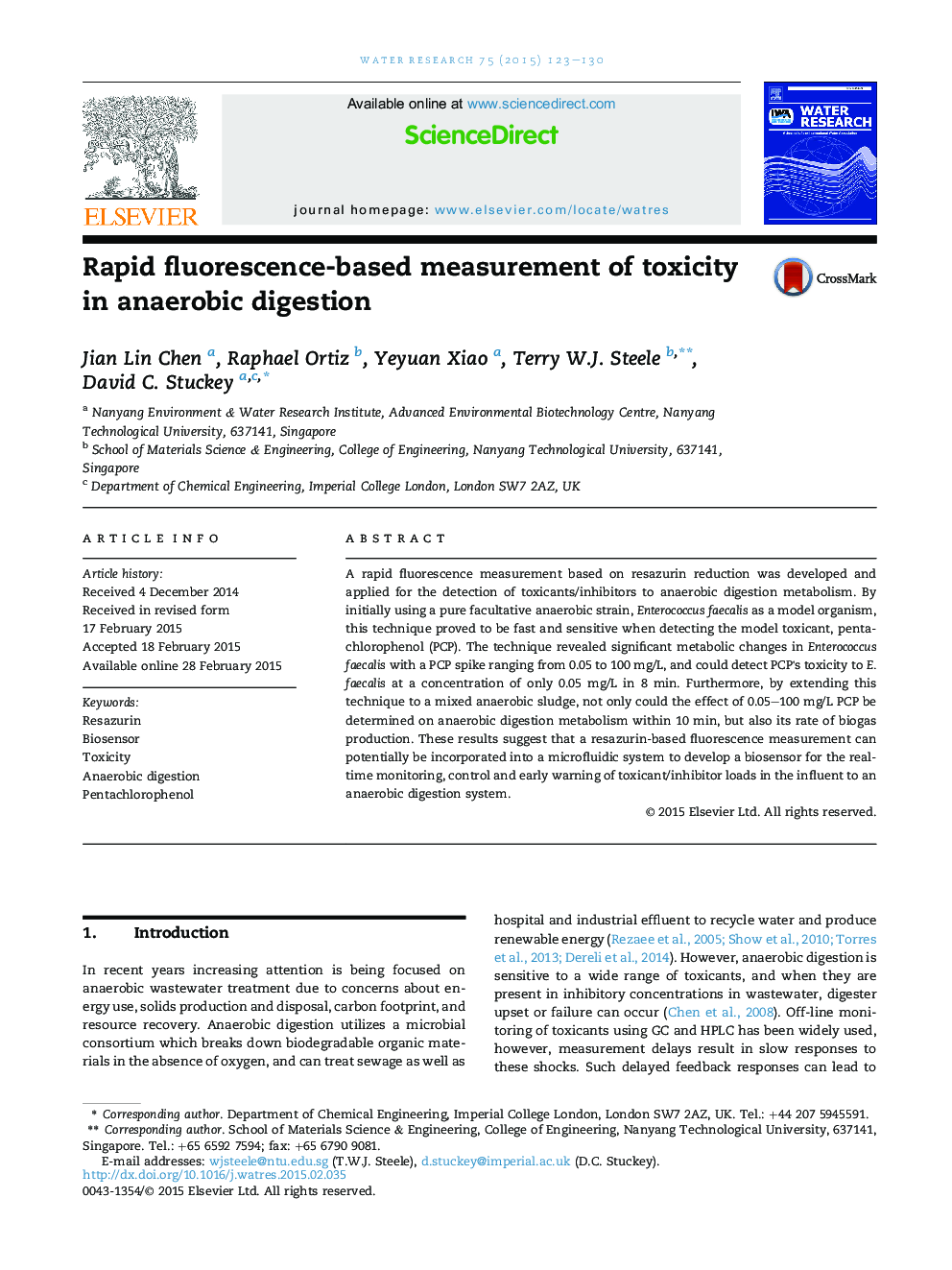| Article ID | Journal | Published Year | Pages | File Type |
|---|---|---|---|---|
| 4481206 | Water Research | 2015 | 8 Pages |
•Studies the effect of PCP on pure anaerobe and anaerobic sludge by resazurin assay.•Provides a rapid optical measurement of solute toxicity for anaerobic digestion.•Gives information about biogas production rate by this “indirect” measurement.•Potential application of the assay in a biosensor for advanced warning of toxicity.
A rapid fluorescence measurement based on resazurin reduction was developed and applied for the detection of toxicants/inhibitors to anaerobic digestion metabolism. By initially using a pure facultative anaerobic strain, Enterococcus faecalis as a model organism, this technique proved to be fast and sensitive when detecting the model toxicant, pentachlorophenol (PCP). The technique revealed significant metabolic changes in Enterococcus faecalis with a PCP spike ranging from 0.05 to 100 mg/L, and could detect PCP's toxicity to E. faecalis at a concentration of only 0.05 mg/L in 8 min. Furthermore, by extending this technique to a mixed anaerobic sludge, not only could the effect of 0.05–100 mg/L PCP be determined on anaerobic digestion metabolism within 10 min, but also its rate of biogas production. These results suggest that a resazurin-based fluorescence measurement can potentially be incorporated into a microfluidic system to develop a biosensor for the real-time monitoring, control and early warning of toxicant/inhibitor loads in the influent to an anaerobic digestion system.
Graphical abstractFigure optionsDownload full-size imageDownload high-quality image (168 K)Download as PowerPoint slide
